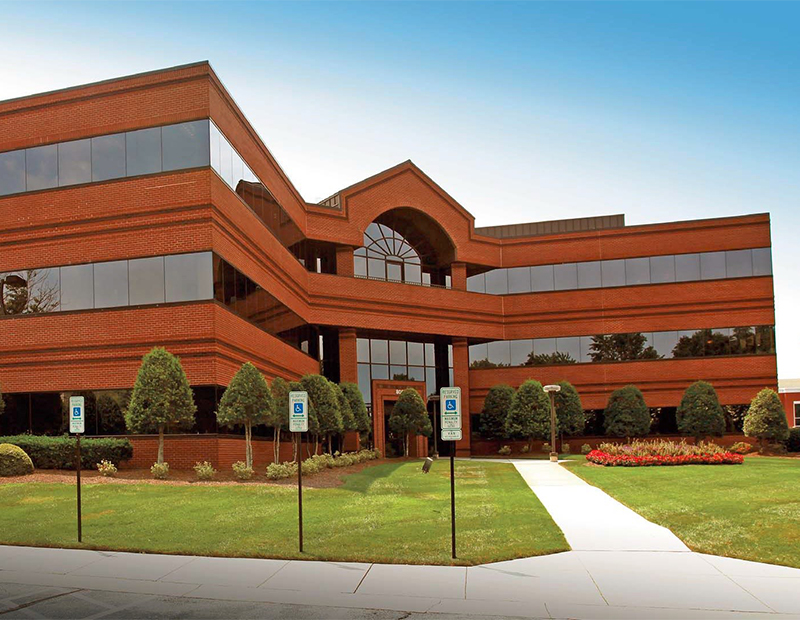Coworking Expansion in NC Shows Sector’s Growth
Office Evolution’s opening of the Greensboro location—its second in the state—illustrates how coworking is both growing nationwide and expanding into smaller metros.
By Scott Baltic
In a move that exemplifies the rapidly growing coworking sector, coworking franchisor Office Evolution has opened a new location in North Carolina, in the Green Valley Office Park in Greensboro.
The new 6,000-square-foot business center offers small businesses and entrepreneurs on-demand office space with 24/7 access. The center includes co-working space and 24 private furnished offices, as well as conference rooms, mailing and phone answering services, and other administrative support.
Franchisee Peggy Barron-Antolin, who has a franchise award to develop three centers in the Piedmont Triad area, has held production management and engineering leadership positions at global manufacturers including Ecolab and Goodyear.
In addition to the Greensboro center, a new Office Evolution business center opened in Raleigh earlier this year, and current plans call for additional locations in Charlotte, Raleigh and the Piedmont Triad area. “Greensboro has a vibrant, entrepreneurial small business community,” Barron-Antolin commented in a prepared statement. “Office Evolution members come from all different professions, including lawyers, accountants, therapists … whether they need a place to pop in and check email, a conference room for meetings, or an office for a day, week, month, year or more.”
Office Evolution built and operated seven business centers across the Colorado Front Range before beginning to franchise in 2012. There are currently 37 locations, across Arizona, California, Colorado, Illinois, Kansas, Massachusetts, New Jersey, New York, North Carolina, Ohio, South Carolina, Tennessee and Utah. In addition, nine locations are under construction and 23 markets are under development (with franchise deals signed), in at least 13 more states.
Coworking space expansion
“The most noteworthy aspect of the coworking phenomenon is probably its extraordinary rate of growth,” Scott Homa, Director of U.S. Office Research for JLL, told Commercial Property Executive. Since 2010, he said, the coworking sector has grown at an average annual rate of 23 percent, versus the overall office market’s typical growth of just 1 percent yearly.
In addition, Homa said, some of the larger coworking companies are diversifying their revenue streams by offering ancillary services to their members. “This evolution is interesting because it’s helping create a ‘captive audience’ to sell goods and services to a physical community, in a way very different from how e-commerce disintermediated the brick-and-mortar retail experience.” Behind the raw growth numbers has been a remarkable geographic expansion, he said, so “It should be no surprise that coworking is growing in places like North Carolina.”
Though some leading coworking operators originated in urban areas and focused their initial expansions in other major cities, Homa explained, “there’s a strategic business need for operators to provide an extensive network of options for members, especially frequent business travelers like sales teams. Adjacency to major corporate headquarters, university systems, airports and other areas of interest can be strong selling points.” In fact, he said, 19 percent of all coworking leasing activity since 2016 took place in the suburbs, and major operators are increasingly focused on secondary markets like Nashville, Charlotte and Austin.
Submarkets within large metro areas that have sizable corporate headquarters and good transit accessibility, such as Tysons Corner in Northern Virginia, Westchase in Houston and Irvine in Orange County, are also seeing strong growth from the coworking sector. WeWork’s Legacy West office in Plano, Texas, is situated off a major highway among major suburban corporate headquarters, which Homa called “a dramatic departure from the company’s walkable, urban roots.”
“We expect activity in these smaller, secondary markets, and suburban fringes of major cities, to pick up as competitive pressures grow in primary markets,” he concluded.
Photos courtesy of Office Evolution









You must be logged in to post a comment.